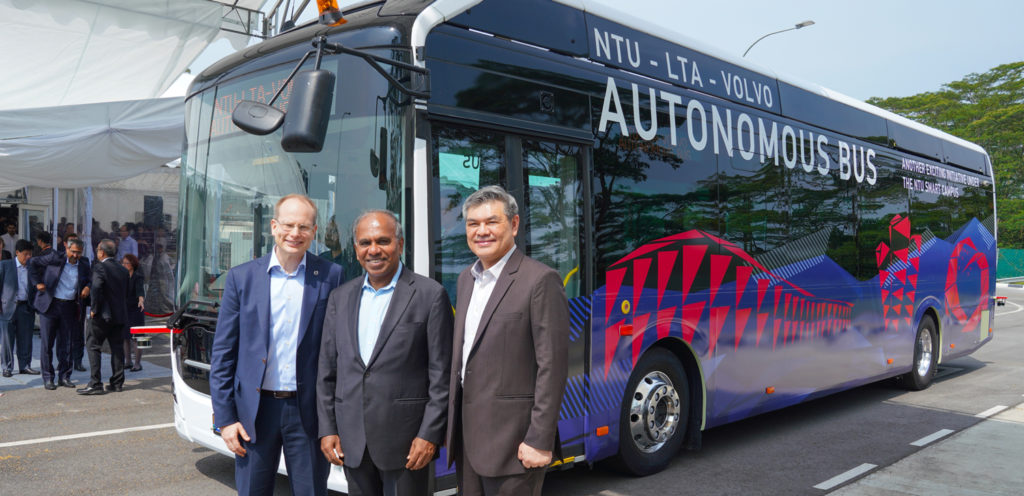A partnership between Volvo Buses and Nanyang Technological University in Singapore has made a breakthrough in autonomous vehicle development with the launch of the world’s first full-size self-driving electric bus.
The single-deck bus measures 12m in length, has capacity for up to 80 passengers and will enter public transportation trials offering a service along fixed routes.
For navigation, the bus is equipped with lidar, stereo-vision cameras that capture images in 3D, and an advanced global navigation satellite system that uses real-time kinematics. This is like any global positioning system (GPS), but uses multiple data sources to give pin-point location accuracy of up to 1cm. All this is managed by an artificial intelligence system.
Ensuring maximum safety and reliability, the AI system is also protected with industry-leading cybersecurity measures to prevent unwanted cyber intrusions.
The Volvo bus is the first of two that has undergone preliminary rounds of rigorous testing at the Centre of Excellence for Testing and Research of Autonomous vehicles at NTU (CETRAN).
Plans are in place to test the bus at NTU and to subsequently extend the route beyond the NTU campus.
“This fully autonomous electric bus will play a role in shaping the future of public transportation that is safe, efficient, reliable and comfortable for all commuters. It will soon be tested on the NTU Smart Campus, which has been home to a number of innovations as a living testbed for technologies that impact the human condition and the quality of life,” said NTU president professor Subra Suresh.
“This research project not only involves cutting-edge science, technology and AI, but is also an excellent example of close partnership among academia, industry and government agencies in translating basic research into products and services for the benefit of Singapore and beyond. And we have a top team of local and international partners in this multi-disciplinary collaboration.”
The bus is undergoing tests at CETRAN where it will replicate various elements of Singapore’s urban road condition, such as traffic signals, multiple bus stops and pedestrian crossings, and tropical conditions such as driving through heavy rain and partially flooded roads.


